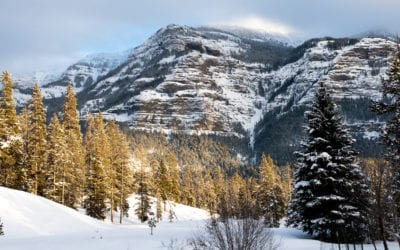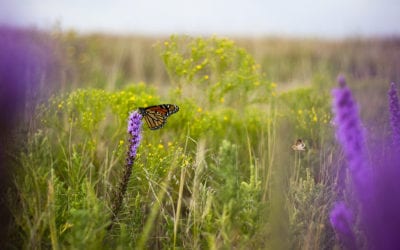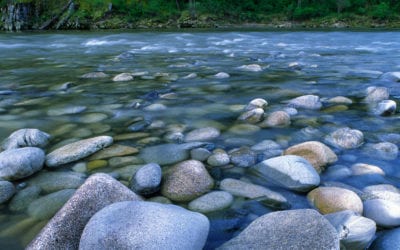Book Review
John Shultis, Book Review Editor
Wilderness Digest
April 2019 | Volume 25, Number 1
RESCUING THE WILDERNESS: THE HISTORY OF WILDERNESS CONSERVATION IN AUSTRALIA
by Geoff Mosley. Colong Foundation for Wilderness. $30 AUD (pb).

Australia has played a seminal role in developing the concept of wilderness as a distinct protected area, worthy of special recognition, designation, and management. The development and deployment of a wilderness concept across this vast and unique island continent has been the subject of many papers, popular articles, and innumerable conversations around the campfire while the billy was boiling. It has never been fully documented, however, until now.
In his scholarly yet personal narrative, Rescuing The Wilderness , Geoff Mosley adds a valuable, interesting, readable, and reliable tome to the wilderness literature. Although the modern concept of wilderness as a distinct protected area started in the United States with John Muir, followed by Aldo Leopold and others as the 20th century rolled out, the movement began in Australia just a few years later, around 1920. This makes Australia’s wilderness story valuable for both global and national reasons, hence adding additional significance to Mosley’s work. It is important for us to know this history, and to become acquainted with the pioneers who drove this issue – their personalities and strategies, the lessons they learned, the many challenges they faced, and how they adapted the modern wilderness concept to an ancient and diverse continent that had been thoroughly inhabited for some 70,000 years before the white settlers arrived.
Rescuing The Wilderness is a highly detailed account of the wilderness concept in Australia from 1946 to present. The earlier years (prior to 1946) were well-documented by Mosley in his previous book, Battle for the Bush: The Blue Mountains, the Australian Alps and the Origins of The Wilderness Movement (1999). Conveniently, the first chapter of this current book summarizes much of that early history, making it a valuable, stand-alone reference. In addition to the historical record and veracity of Rescuing The Wilderness , there are three reasons I recommend it to you.
First, it is readable. I love the opening paragraph, the tone of which is carried through the book:
In a world in which humans swarm like locusts, devouring resources as though there were no tomorrow, the movement to keep some areas in their wild state forever is a bold one and a sign of hope for the future. Wilderness is a concept and a reality that turns on its head many of the ideas that have driven human history. A long walk in the wilderness is equivalent to returning to the way the world was through most of the millions of years of evolution that led humans to where they are today. As one of my grandchildren put it wilderness is “the real world.”
Second, the book reads as much like a memoir as it does a scholarly reference. Mosley is writing about a concept that is thoroughly embedded in his life, and he has the professional experience and reputation to tell both the practical story as well as present its relevance to human culture and modern development. He has also been an important part of the global wilderness movement and, for full disclosure, has been a valuable ally for me and the WILD Foundation since we first me at the 2nd World Wilderness Congress in Australia in 1980. He is also a member of our Wilderness Specialist Group (World Commission on Protected Areas, IUCN).
Third, the author readily addresses the challenges presented by the wilderness concept, details we all need to know so that our own work is more informed, effective, and efficient. The way in which this is presented in Rescuing The Wilderness reminded me of something I was often told by Ian Player (founder of the World Wilderness Congress and pioneer of the wilderness concept in South Africa).
Ian was adamant that his best tool for deploying the highly contentious wilderness concept in South Africa in the 1960s and 1970s would be the transcripts of the US Senate hearings that were mailed to him by Howard Zahniser, author of the US Wilderness Act of 1964. As a game ranger in the iMfolozi Game reserve, Ian carried those transcripts in his backpack as he patrolled what would soon become Africa’s first declared wilderness area. He read those transcripts every night by light of the campfire, accompanied by the sounds of the African night, and, as a result, “I knew every argument that could be made against the wilderness concept, and therefore how to deal with the immense opposition I knew I would face in the years ahead of me.”
One of the most difficult issues encountered by the modern wilderness concept, wherever it is deployed, is the issue of the First Peoples whose cultures developed in wild nature so thoroughly, and were still inseparable from it, that they often have no equivalent to the word wilderness as we know it. Adding to this inescapable reality is the fact that the early pioneers of the wilderness concept were Anglos, of colonial descent, almost all of whom created an overamped veneer of elite recreation to the concept. Despite the almost universal element of spirituality of – or, at least, respect for – nature, wilderness still came off as something for the white, elite bushwalkers. This created a major issue with original indigenous stewards of the land and seas, as well as ample fuel for our adversaries, those who want to destroy the concept so that no lands are sacred and closed to human development. Mosley addresses these issues head-on, acknowledging mistakes made and honest attempts to resolve them – in the case of working with indigenous peoples – or in fighting and winning the inevitable battles – when dealing with developers and recalcitrant politicians.
Rescuing The Wilderness deserves a place on your bookshelf, in a folder in your computer, and on a shelf in your local library.
Reviewed by VANCE G. MARTIN, president of the WILD Foundation, cochair of the Wilderness Specialist Group (IUCN) and editorial board of IJW; email: vance@wild.org
Read Next
Personal Restraint and Responsibility for Protected Areas in Crisis
“How can a society champion the public good in one instance, and yet willfully damage and undermine that same good in another?”
Wilderness Was Not America’s New Idea: Exploring a New Wilderness Stewardship Ideal at the 2018 National Wilderness Workshop
As tribes across the United States seek to regain their sovereignty and access to ancestral lands and ecosystems, we as managers can be visionary and create a management model that extends beyond a seat at the table.
Did #MakeYourSplash Make a Splash?
In 2018, we celebrated the 50th anniversary of the birth of our Wild and Scenic River System. Created in 1968 with only eight rivers, the system has grown to include more than 12,000 miles (19, 312 km) and over 200 protected rivers.



